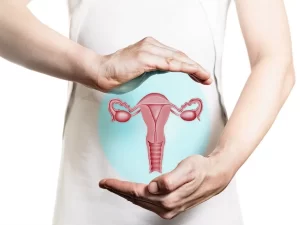

Lavina Lall, MBA, MSN
Manager – Administration, Fortis Hospital, Mulund
Intravenous catheterization is amongst the most widely performed procedures in a healthcare setting. The placement of a peripheral intravenous catheter (PIVC) is one of the most commonly performed, and at times a lifesaving procedure carried out in hospitals.1 A peripheral intravenous catheter helps administer intravenous fluids, blood sampling, medications, and blood products. International studies report that approximately 60-90% of patients receive PIVCs during their hospital stay.2
Impact of PIVC usage
PIVC usage may involve multiple risks and complications for both patients and healthcare workers (HCWs). These complications may include infiltration, phlebitis, and catheter-related infections in patients. Apart from causing discomfort to the patient and frequent catheter change, phlebitis may also lead to other complications like cellulitis, septicemia, DVT, thereby increasing patients’ hospital stay and the cost of healthcare. With most hospitalized patients requiring PIVCs, PIVC-related process improvement may impact the health, safety, and satisfaction of patients and health care workers, in addition to reducing costs.
In India, approximately 1/3rd of patients with PIVCs may develop phlebitis.3 It can commonly result in catheter failure. The causes may include chemical, bacterial or mechanical causes such as inappropriate catheter securement.4 Besides, improper placement of PIVC can damage the vein wall, resulting in blood clot formation and occlusion. It may also lead to IV fluid leakage or infiltration into the surrounding tissues and further complications.
Healthcare workers may also be at risk with improper PIVC use. The common complications include blood splashes, needlestick injuries, and exposure to bloodborne pathogens while inserting PIVCs. An international survey indicated that approximately 45% of nurses were at blood exposure risk during PIVC insertion (minimum one exposure per month).5
Appropriate management of IV catheters is necessary
The period for which an IV catheter stays in position and is functional, or catheter dwell time, is linked with catheter-related complications. Apart from routine catheter placement, vein condition, types of drugs administered, and length of hospital stay are a few factors affecting dwell time.6
Therefore, it is critical to monitor and evaluate catheters and vascular access sites daily to check for irritation, malfunction, or infection and remove them if needed. It could help prevent unnecessary catheter insertion and reduce costs, equipment use, and staff workload.
As per the latest Infusion Therapy Standards of Practice, 2021 guidelines, some key practices to follow for healthcare workers, especially nurses, while planning for vascular access devices (VADs), include:7
- Evaluate and select appropriate PIVC depending upon
- anticipated duration of infusion therapy
- appropriate infusion characteristics for peripheral administration
- Avoid continuous infusion of irritant medications/ solutions
- Avoid extremes of pH and osmolarity
- Protection of PIVC
- Perform skin antisepsis before insertion
- Ensure aseptic insertion
- Maintain intact dressing and securement
- Adhere to ANTT (Aseptic Non-Touch Technique) for insertion – essential to reduce risk of infection and increase catheter dwell time
- Use near-infrared (nIR) light technology to help locate viable superficial peripheral venous sites and reduce procedure time for PIVC insertion
- Choose the smallest-gauge PIVC to accommodate the prescribed therapy and patient need
- 20- to 24-gauge PIVC for most infusion therapies
- 22- to 26-gauge PIVC for pediatric patients, older adults, neonates, and patients with limited venous options to avoid insertion-related trauma
- large-gauge PIVC for adult and pediatric patients when faster fluid replacement is required
- Disinfect the connection surface, and sides of any needle-free connector (NFC) attached to any PIVC by a vigorous mechanical scrub using 70% isopropyl alcohol or alcohol-based chlorhexidine
- Limit number of PIVC insertion attempts – not more than 2 per clinician
- Flushing and locking of PIVCs
- Use 0.9% preservative-free sodium chloride for flushing
- Flush and lock at least once every 24 hours
As per an international study conducted by Becton Dickinson and Company (BD), the use of BD vascular care solution and skin antiseptics for PIVCs can reduce the risk of catheter failure by 27% and significantly reduce catheter-related infections.8
Appropriate use and handling of PIVCs is a critical aspect in the administration of infusion therapy. Healthcare workers, particularly nurses, should ensure proper PIVC handling as it may help reduce complications, delayed treatments and improve patient satisfaction. Improved management of PIVCs can also help minimize the risk of infections with bloodborne pathogens in HCWs and help control hospital costs.
References:
- Lopez V, Molassiotis A, Chan W, Ng F, Wong E. An intervention study to evaluate nursing management of peripheral intravascular devices. J Infus Nurs. 2004;27:322–31.
- Helm RE, Klausner JD, Klemperer JD, Flint LM, Huang E. Accepted but unacceptable: peripheral IV catheter failure. J Infus Nurs. 2015;38(3):189–203.
- Mandal A, Raghu K. Study on incidence of phlebitis following the use of peripheral intravenous catheter. J Family Med Prim Care. 2019;8(9):2827-2831.
- Marsh NM, Webster J, Mihala G, Rickard CM. Devices and dressings to secure peripheral venous catheters to prevent complications. Cochrane Database Syst Rev. 2015;(6):CD011070. 10.1002/14651858.CD011070.pub2.
- Jagger J, Perry J, Parker G, Phillips EK. Nursing2011 survey results: Blood exposure risk during peripheral I.V. catheter insertion and removal. Nursing. 2011;41(12):45-49.
- Zingg W, Pittet D. Peripheral venous catheters: an under-evaluated problem. Int J Antimicrob Agents. 2009;34(suppl 4):S38–S42. 10.1016/S0924-8579(09)70565-5.
- Infusion Nurses Society. Infusion Nursing Standards Practice. J Infus Nurs. 2021
- Guenezan J, Marjanovic N, Drugeon B, et al. Chlorhexidine plus alcohol versus povidone iodine plus alcohol, combined or not with innovative devices, for prevention of short-term peripheral venous catheter infection and failure (CLEAN 3 study): an investigator-initiated, open-label, single centre, randomised-controlled, two-by-two factorial trial [published correction appears in Lancet Infect Dis. 2021 Apr 6;:]. Lancet Infect Dis. 2021;21(7):1038-1048.






